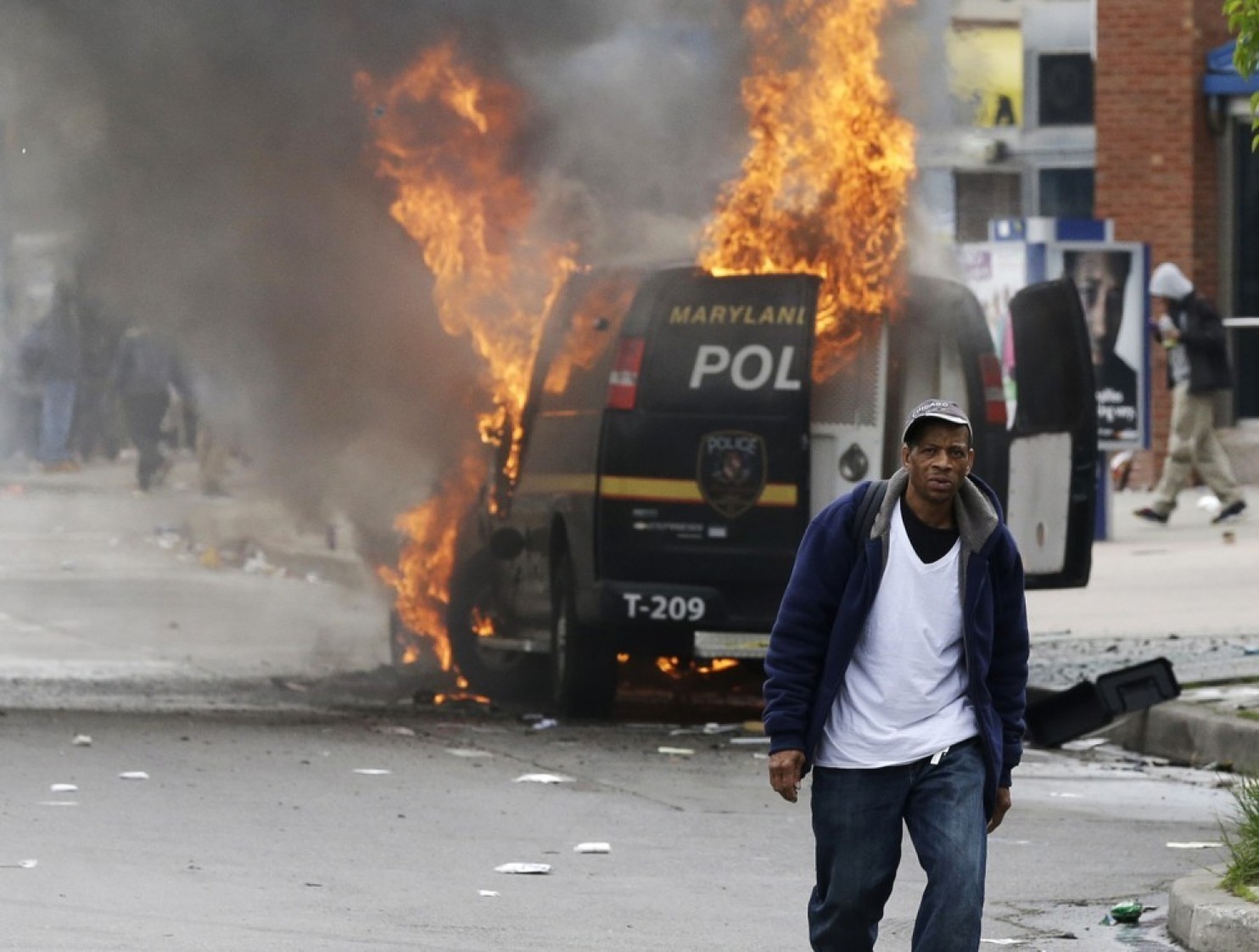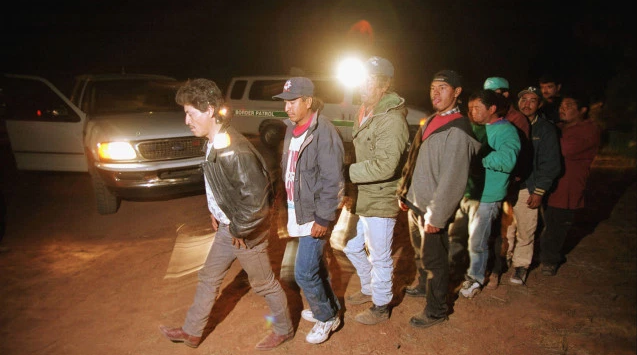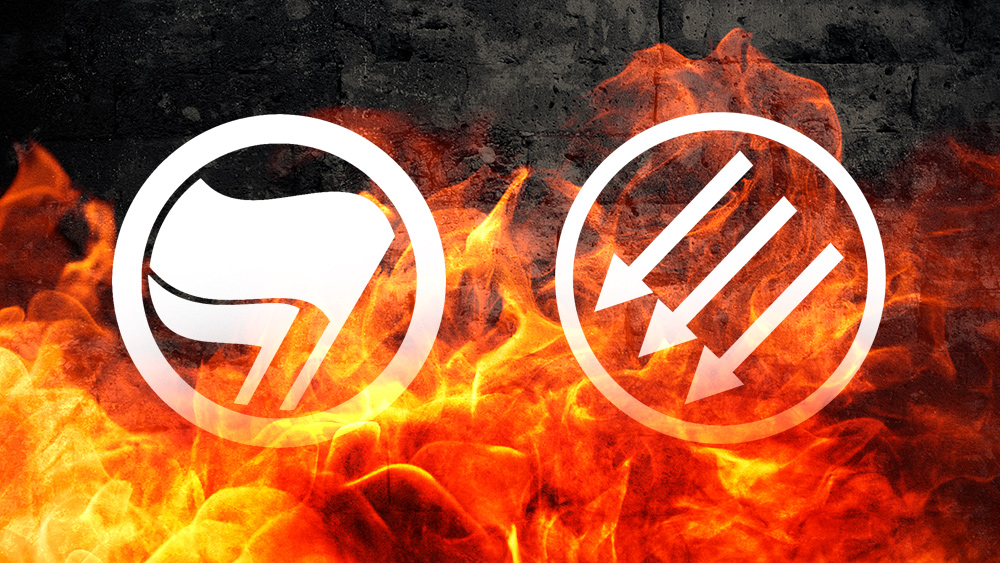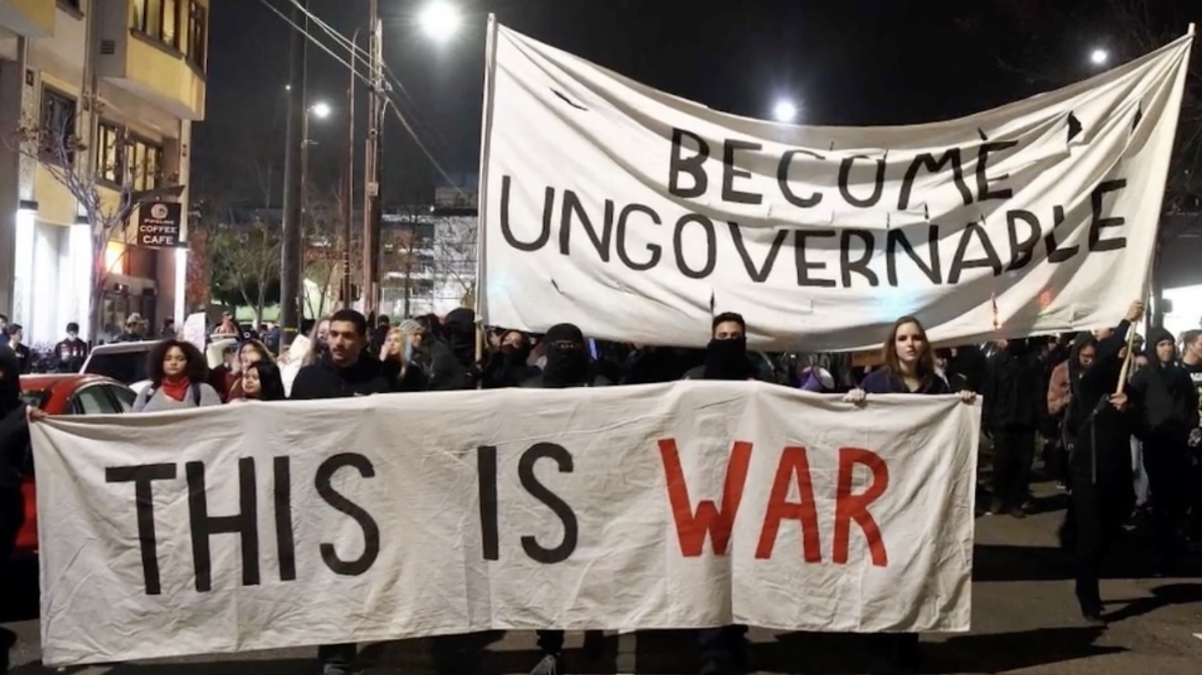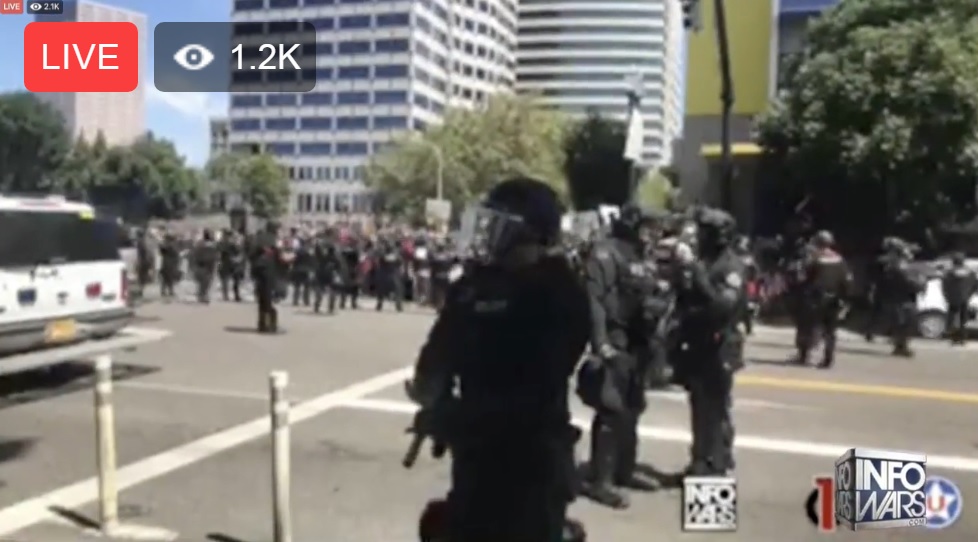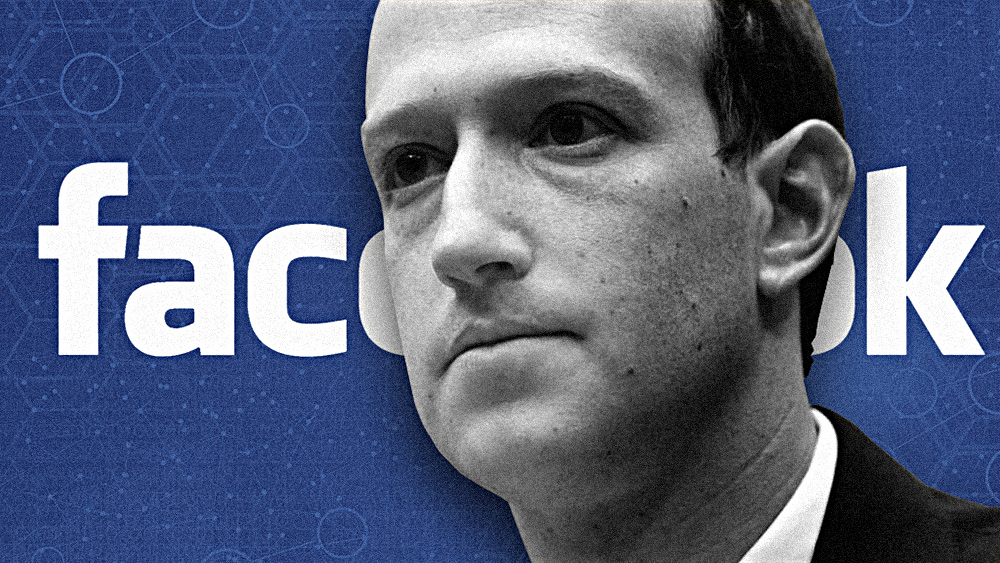How Howard Zinn’s anti-American textbook inspired the Antifa bombing attempt
07/27/2019 / By News Editors
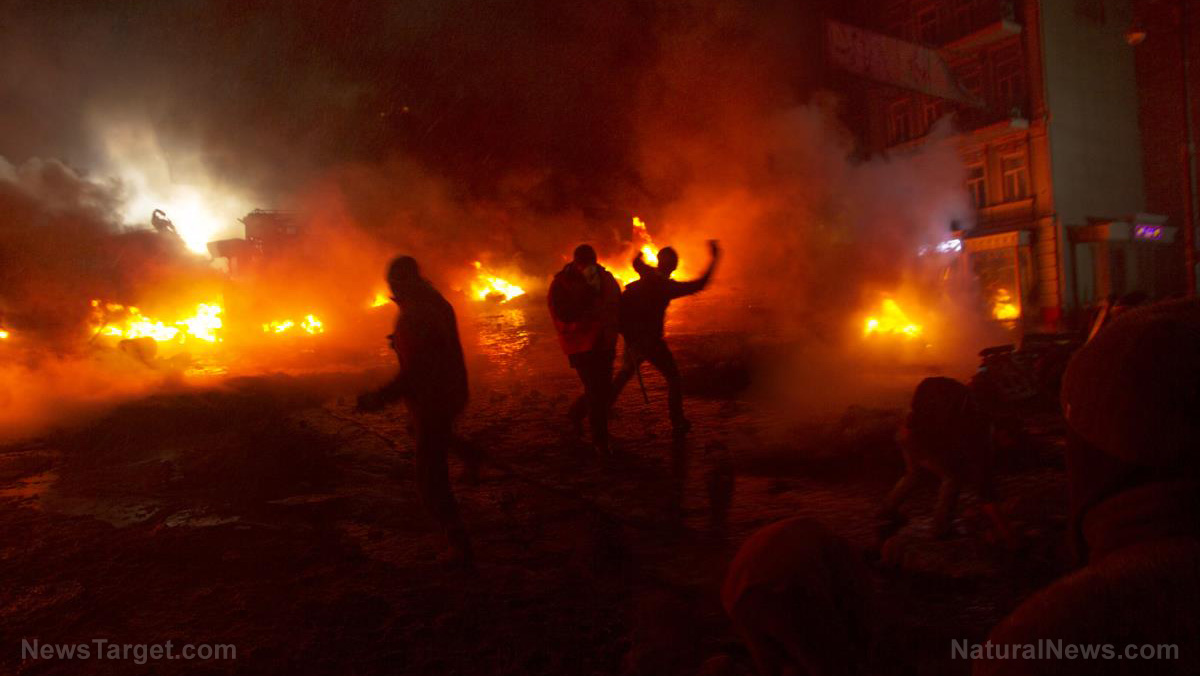
In Tacoma, Washington, during the pre-dawn hours of Saturday, July 13, 2019, 69-year-old Willem Van Spronsen attempted to light a propane tank on fire, torched a vehicle, and threw “incendiary devices” at the outbuildings for the Northwest Detention Center and vehicles in the parking lot. When confronted by police, he pointed his rifle at them and was shot dead before he could fire.
(Article by Mary Grabar republished from TheFederalist.com)
Van Spronsen was a member of Antifa (short for “anti-fascist”), a masked domestic “protest” group. This group’s members recently beat up journalist Andy Ngo to the point he suffered a brain hemorrhage and had to be hospitalized. Van Spronsen had been previously arrested for grabbing a police officer at an Antifa protest. This time, as reported in the Washington Times on July 15 and then picked up by other conservative outlets, he left behind a manifesto.
Four days later, the Washington Post published part of the story in a watered-down article titled “ICE detention-center attacker killed by police was an avowed anarchist, authorities say.” In the interim, tributes from Antifa Facebook, Black Lives Matter leader Shaun King, and other likeminded sources came out describingSpronsen as a heroic “martyr.”
Van Spronsen and Zinn Admire the Same Violent Vigilantes
It’s apparent from his manifesto that Van Spronsen believed he was liberating a “concentration camp,” as U.S. immigration facilities have been described by Democrats including the socialist lightning rod Rep. Alexandria Ocasio-Cortez. After rambling on about “the forces of evil,” “concentration camps for folks deemed lesser,” and the ineffectiveness of “the centrist” reformer, the manifesto told readers, “see howard zinn, ‘a people’s history of the united states.’” The book would provide, he alleged, support for Van Spronsen’s assertion that “we are living in visible fascism ascendant.”
Van Spronsen named as his “teachers” Don Pritts, his “spiritual guide,” John Brown, his “moral guide,” and Emma Goldman, his “political guide.” The first two were quoted on their calls to “action” and Goldman, on revolution: “if I can’t dance, I don’t want to be in your revolution.”
As they were to Van Spronsen, Brown and Goldman are Zinn’s heroes. Both figure prominently in “A People’s History of the United States,” a book billing itself as a textbook that has sold more than 2.6 million copies since it was first published in 1980. It is frequently bought with public tax dollars and used in public school classrooms, then and now.
Zinn’s ‘History’ Text Preys on the Naïve and Uninformed
By any reasonable definition, Zinn’s book does not deserve to have “history” in the title. Zinn’s book is filled with lies, omissions, distortions of evidence, logical fallacies, and plagiarism from dubious sources. In my forthcoming book, “Debunking Howard Zinn,” I detail all of these critical problems. I also describe Zinn’s life, from budding teenage communist to Pied Piper professor at Spelman College and Boston University, and globe-trotting anti-American agitator.
Sam Wineburg, a history education professor, is simultaneously one of Zinn’s harshest critics and most vociferous defenders. He notes that Zinn appeals to the “inner Holden Caulfield,” the jaded teenage anti-hero of the now-classic 1951 novel, “Catcher in the Rye.” As the 2017 movie “Lady Bird” mockingly revealed, if there’s one thing Zinn’s book has been associated with, it’s self-righteous adolescent pretension.
Seeing the book only in this way, however, ignores the influence of this work of propaganda. David Horowitz calls Zinn’s textbook “the Mein Kampf of the Hate America Left.” Yet Zinn’s book is not merely another leftist version of American history. Zinn succeeded where even Communist leader William Z. Foster could not (Foster’s 1951 work, “Outline Political History of the Americas,” shares some stunning parallels). No other leftist professor has ever produced a book that has vaunted him into a similar degree of rock-star status.
Zinn’s “history,” although outrageous, appeals to the uninformed and the vulnerable. Grossly distorting the historical facts and then skillfully appealing to the reader’s emotions, Zinn convinces many that he has revealed the long-suppressed, gruesome truth about America’s past.
Hollywood and the Educational System Prop Zinn Up
The protagonist of the award-winning movie “Good Will Hunting” says Zinn’s book, unlike traditional tomes, is “a real history book,” one that will “knock you on your -ss.” The speaker and writer of these lines, actor Matt Damon, was first introduced to “A People’s History” as a ten-year-old when it first came out.
The Zinn family lived next door. Damon began visiting them at age five, getting cookies, and probably reinforcement of his mother’s deep “social consciousness,” as Zinn presented the political views of the leftist education professor to biographer Davis D. Joyce.
Unfortunately, Damon was not the last ten-year-old to be exposed to Zinn’s toxic view of America’s past. High school students taking Advanced Placement U.S. History are likely to use the book, especially since the AP guidelines have been rewritten to conform to the Zinn vision of history. Teachers can even download lesson plans from the Zinn Education Project
Beyond AP classes, Zinn’s book is used in college education programs and teaching workshops. Recently, I had yet another college student tell me about a professor recommending the book. In 2008, two years before he died, Zinn was the keynote speaker at the National Council for the Social Studies, the biggest gathering of social studies and history teachers in the nation.
Radical Leftists Blindly Defend Zinn’s Outrageous Claims
Most of the criticisms of the book are deflected with the same kinds of objections Zinn used when he received a negative review. In response to pointed objections from the legendary historian Oscar Handlin, Zinn replied that Handlin simply disagreed with his pacifist political views.
Others on the left, like Michael Kazin, called the book’s premise suitable for “a conspiracy-monger’s Web site.” Yet, in a typical partisan reflex, when it was revealed in 2013 that then Indiana Gov. Mitch Daniels had sought to keep it out of K-12 public classrooms, Zinn critics like Kazin and Wineburg turned into Zinn defenders.
Today, Zinn’s view has become accepted in classrooms across the country, a consequence of its popularity as well as its match with ideas commonly taught in teacher education classes, which feature some of the farthest-left professors in academe, according to surveys.
Apparently without any protest, two recently elected millennials, district attorney Natasha Irving from Waldoboro, Maine, and Oklahoma City Council member JoBeth Hamon, invoked Zinn as they took office. In her maiden speech, Irving said her model for service would be Zinn, and as the sacred object to place her hand on as she took her oath of office, Hamon chose “A People’s History” instead of the customary Bible.
Testimonials about the “life-changing experience” of reading Zinn come in every day. Playwrights, songwriters, editorialists, movie producers, and rock bands are “inspired” by his life. A Zinn biopic will soon be coming to Broadway. As she explained in a pre-concert interview, Phoebe Hunt—who was inspired to read “A People’s History” by the 2016 Standing Rock protests—was so moved by the book that she cried herself to sleep and then wrote a song.
Zinn Sowed the Seeds of Antifa’s Violence
From the example of Van Spronsen, however, not all readers of Zinn’s book react with cathartic cry-sessions. Some resort to violence. Zinn’s work was a mainstay during the Occupy Wall Street movement, the precursor to the international Antifa movement in the United States. The Zinn Education Project quickly came to the aid of the Black Lives Matter movement by providing inspirational educational materials. In 2015, the PEN Freedom to Write award was given in Zinn’s honor to Black Lives Matter activists DeRay Mckesson and Johnetta Elzie.
Zinn glorifies martyrs (like John Brown) who die—and kill—while fighting “The System.” He regrets the fact that “it was Abraham Lincoln who freed the slaves, not John Brown.” The latter “was hanged, with federal complicity, for attempting to do by small-scale violence what Lincoln would do by large-scale violence…” Zinn fails to mention the innocent civilians killed by Brown and his gang during their fruitless insurrection.
Zinn calls the 1967 riots “the greatest urban riots of American history.” The prosecution of H. Rap Brown for making “a militant, angry speech in [Cambridge,] Maryland, just before a racial disturbance there” in 1967 is presented as government persecution. In actuality, H. Rap Brown provoked a riot by saying such things as, “It’s time black folks stopped talking about being non-violent,” and “don’t be trying to love that honkey to death. Shoot him to death. …if this town don’t come around, this town should be burned down.”
In another passage, the deaths by self-immolation of Norman Morrison, “a thirty-two-year-old pacifist, father of three,” and of 82-year-old Alice Herz, are presented as “a statement against the horror of Indochina.”
Antifa, Like Zinn, Wants the End of America As We Know It
“A People’s History” places a wildly disproportionate amount of focus on the past sins of the United States. The work teaches students to view history through the lens of toxic identity politics. The enslavement of blacks and women, exploitation and murder of workers and Indians, imprisonment of political dissidents, and America’s World War II treatment of Japanese-born Americans all get prime billing. For Zinn, America is irredeemable and merits comparisons to Nazi Germany.
Van Spronsen, like many Zinn acolytes before him, believed this twisted version of history. Van Spronsen believed he was liberating the real concentration camps, American detention facilities for foreigners claiming they need asylum.
The power of “A People’s History of the United States” to inspire revolutionary, violent action should not be underestimated. Antifa is no mere protest movement. Their goal is a worldwide revolution, a vision Zinn shared. If he were still alive today, Zinn would be cheering them on.
Read more at: TheFederalist.com
Tagged Under: antifa, howard zinn, insanity, left cult, lies, lunatics, radical left, terrorism, violence
RECENT NEWS & ARTICLES
COPYRIGHT © 2017 VIOLENCE NEWS



